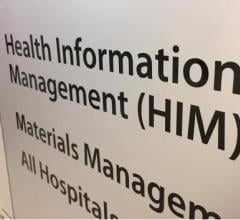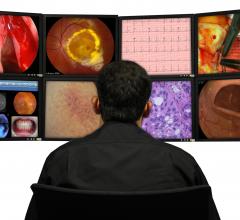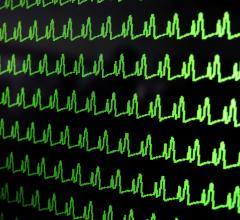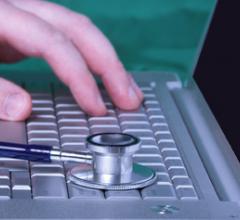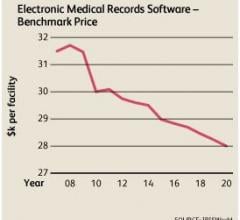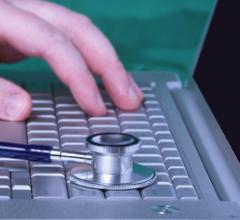
The MDA TransQuest system offers a real-time, wireless, PDA-based patient transport dispatch system. It provides data on patient transportation via PDA and automatically prioritizes and schedules requests.
Quick communication between medical staff is often critical in acuity care, and new technologies are helping make it easier for staffs to increase speed and efficiency. Staffs no longer need to depend on intercom pages, pagers, landline phones or cell phones.
About five years ago El Camino Hospital in Mountain View, CA, was looking for a better way for its medical staff to communicate instead of using voice pages over intercoms, or walking around from room to room looking for someone. The hospital first tried cell phones, but found they did not work out well and were bulky to carry, said Chris Tarver, RN, director of improvements and emergency services at El Camino. She said the phones also were no good for tracking people down if you did not know who was on shift.
Instead, Tarver said the hospital adopted the Vocera Communications System in 2003. It uses a small, hands-free, voice-activated “badge” device, which is worn on a lanyard around the neck. The badge weighs less than 2 ounces and is small enough to fit in a pocket. A user can give verbal commands to instantly contact other device users. It also has a text message option, which appears on a small LCD screen. It works in buildings equipped with an 802.11b network. El Camino had to expand its WiFi network to ensure coverage in all areas, including elevators.
The badge software holds all the users’ profiles, which can be quickly transferred on the device at shift changes. Users press a summon button and just say the name of the person they are looking for and it will either connect directly to the other person’s Vocera badge for a hands-free two way conversation, or it will say the user is logged out. A user can manually or verbally log off the system.
“It’s definitely an efficiency,” Tarver said. “Responsiveness has definitely increased.”
That efficiency was demonstrated when a fire broke out on the fourth floor of the 395-bed hospital in 2004. Staff used their Vocera badges to quickly coordinate and evacuate patients. Tarver said that though the fire station is only half a block away, the entire fourth floor had been evacuated by the time firefighters arrived.
“The Vocera badge was indispensable,” Tarver said.
She also said the badges have nearly eliminated the need for intercom pages, making for a quieter hospital environment. She said another unforeseen advantage is the badges handle about 40,000 phone calls a month, which eliminates intervention by the hospital’s operators. With extra time on their operators’ hands, El Camino created a new physicians’ answering service for its doctors.
When the hospital’s phone system crashed one day, Tarver said the Vocera badges still functioned and were able to pick up the extra call volume until the landlines were repaired.
Tarver said the hospital currently uses 800 badges and recently ordered 300 more to expand their use to the administrative departments. While some badges are assigned to particular staff members, others are shared from shift to shift, with a total of 1,700 employees now using the Vocera system on a daily basis.
“They are a vital part of our daily operations,” Tarver said.
The only disadvantage of the devices she has seen is with voice recognition of non-native English speakers. She said the technology recognizes Spanish accents without much trouble, but has problems understanding Eastern European accents.
Mobile Dictation
Doctors on the go can use hand-held recorders or tablet computers to verbally dictate patient notes that will automatically be converted into a text and entered into a patient’s electronic medical record (EMR) without typing or using a transcription service.
Reid F. Conant, M.D., CMIO, Tri-City Emergency Medical Group in Oceanside, CA, has been using Nuance Communication’s Dragon NaturallySpeaking 9 dictation software for the past eight months as part of the hospital’s conversion to paperless EMR technology. He said all the Motion tablet computers the ED uses to enter vast amounts of patient data include the Dragon software.
“Getting that amount of information into the record in real-time is a real benefit,” Dr. Conant said. “It improves care dramatically.”
He said doctors used to make phone calls to an answering system and leave messages that a typist later transcribed into a patient’s record. However, the process sometimes took one or two days before the data appeared in the patient’s record. He said this caused a blind spot in the records of critical care patients who needed their information updated immediately. This was solved with the automatic dictation software.
With dictation entering the text automatically into the EMR, Dr. Conant said doctors can now spend more time with a patient and a patient can listen to everything the doctor says. He said this has helped engage patients so they better understand their condition, and allows them a chance to interject additional medical history information.
“We now spend that time at the bedside and involve the patient more in the process,” Dr. Conant said.
He said it takes about 15-20 minutes to read predefined text so the program recognizes the user’s voice and pronunciations. The company says the system is about 99 percent accurate in its transcription, and Dr. Conant agrees.
The program also allows clinicians to create voice prompts to format sections of the record quickly. Conant said he can prompt “CBC normal” and the program automatically flows in text for normal blood results, or “CBC abnormal” and then leaves blanks for him to fill in.
Coordinating Patient Transport
One time-consuming bottleneck in hospitals involves patient transport. The usual system is to make a pager call and wait for the transporter staff to phone so they can write down the patient’s information, where they are, where they need to go, and manually work out which patients have priority.
The MDA TransQuest system offers a real-time, wireless, PDA-based patient transport dispatch system. It provides data on patient transportation and automatically prioritizes and schedules requests. The system provides a link in dispatching, managing and tracking patient transportation.
Potomac Hospital in Woodbridge, VA, began using the system about three years ago. The hospital has a 10-person staff to transport between 80 to 110 patients a day around the building.
“It’s a wireless system used for the transfer of patients and it replaced a pager system that was not very efficient,” said Martha Beverly, Potomac’s director of sterile processing and transportation. “The old system was very time consuming. What nurse has the time to wait by the phone for a call back?”
She said TransQuest transport requests are made at any desktop computer located around the hospital. A clinician can click on TransQuest icon and it takes about a minute or less to enter patient information via drop-down menus. The
system automatically prioritizes requests made from anywhere in the hospital and sends the information to Dell personal digital assistants (PDAs) the transporters carry. Beverly said the information includes personal data such as a birth date so the transporter can confirm the patient’s identity.
The MDA TransQuest automatically keeps statistics of all the information entered into the system. Beverly said when they began using the system these stats were used almost immediately to see when peek periods of transport requests are made. This translated into revised transporter work schedules to better accommodate the hospital’s needs. She said over all staff efficiency has been streamlined with the TransQuest system.
“There are other systems out there, but this one worked well for our facility,” Beverly said. “It’s just so much better than what we had.”
MDA says the system is easy to use for all skill levels. Patient transportation requests are entered into the hospital’s existing intranet via a Web interface. They are then prioritized and delivered to the next available transporter with detailed information regarding equipment (i.e., is oxygen needed or does the patient requires a wheelchair, stretcher or bariatric bed), locations and handling requirements for each patient.
TeleTracking Technologies recently released its newest version of its hospital transport management software called TransportTracking mobile. The wireless, hand-held device eliminates the need for dispatchers by automatically assigning jobs to the nearest, most appropriate transporter without human intervention.
The technology also allows supervisors to be on the floors where their transporter team is working. They can manage and modify workload with a few clicks on the device.
TeleTracking also offers the BedTracking mobile, a bed management system for use on PDAs to manage bed turnover from anywhere in the hospital. It provides real-time information on the status of all hospital beds — occupied, dirty, in progress, clean, clean next or STAT — as well as pending transfer or discharge status. Users can communicate directly with their staff via a few taps on the PDA.




 June 14, 2024
June 14, 2024 
